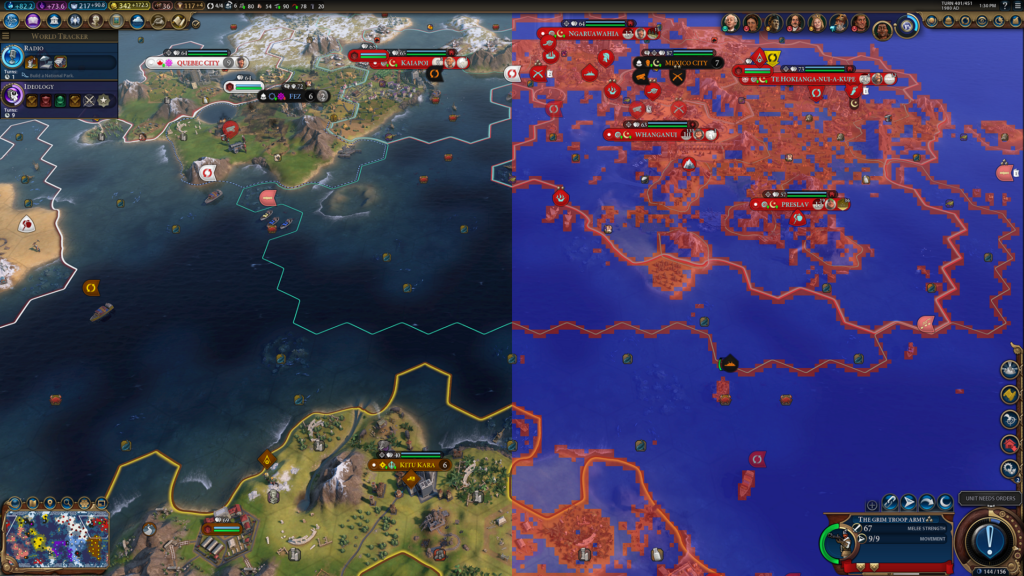As someone who doesn't know much about VRS (Variable Rate Shading), I did some digging...and this sounds pretty amazing for next-gen.
VRS is basically a nifty trick that lets developers lower fidelity of areas we don't really see in order to reduce GPU load, thereby freeing up resources to push faster frame rates. The reduction in quality is slight and apparently not noticable, and could help tremendously in third-person open-world games with faraway distances, and maybe even first-person games with motion blur.
It might be the gateway for the 120FPS (4K?) gaming that Microsoft touted with the Xbox Series X.
In the following VRS On vs VRS comparison, the frame rate speeds jumped by 150% when Variable Rate Shading was turned on. Speaking of ray-tracing, VRS may help stabilize the FPS hit when RT is turned on/used in-game.
Right now VRS is only available for Turing-based Nvidia GPUs. But AMD's new Navi cards will support it (along with ray-tracing).
From a 3DMark press release:
From tomshardware:
I'm not a games developer, so I can't talk in length on how this will affect games performance or development. I'd love to hear more in-depth explanations on the value of VRS especially in a closed/synergized environment like a console.
But even with this layman's understanding of VRS the feature seems incredibly valuable and could open up tons of new doors for next-gen experiences.
In tandem with the SSD, which can apparently be used as Virtual RAM to feed data/textures/assets directly to the GPU and CPU (via memory paging? this might be wrong), VRS could make consoles much more efficient and reduce the amount of compromise needed to run games at higher resolutions with higher frame rates.
Bonus: Here's a really long Nvidia VRS presentation from SIGGRAPH 2018:
VRS is basically a nifty trick that lets developers lower fidelity of areas we don't really see in order to reduce GPU load, thereby freeing up resources to push faster frame rates. The reduction in quality is slight and apparently not noticable, and could help tremendously in third-person open-world games with faraway distances, and maybe even first-person games with motion blur.
It might be the gateway for the 120FPS (4K?) gaming that Microsoft touted with the Xbox Series X.
In the following VRS On vs VRS comparison, the frame rate speeds jumped by 150% when Variable Rate Shading was turned on. Speaking of ray-tracing, VRS may help stabilize the FPS hit when RT is turned on/used in-game.
Right now VRS is only available for Turing-based Nvidia GPUs. But AMD's new Navi cards will support it (along with ray-tracing).
From a 3DMark press release:
Shading rate refers to the number of pixel shader operations called for each pixel. Higher shading rates improve accuracy but are more demanding for the GPU. Lower shading rates improve performance at the cost of visual fidelity.
With Variable-Rate Shading, developers can vary the shading rate within a single frame. By using VRS to lower the shading rate for parts of the frame that are in deep shadow, far from the camera, or peripheral to the player's focus, for example, a game can run at a higher frame rate with little perceptible loss in visual quality.
From tomshardware:
Developers can reduce the visual fidelity in appropriate areas of the frame, so it's less demanding on a PC's graphics card. That can boost framerates and also let lower-end GPUs run a game better than it would without VRS.
I'm not a games developer, so I can't talk in length on how this will affect games performance or development. I'd love to hear more in-depth explanations on the value of VRS especially in a closed/synergized environment like a console.
But even with this layman's understanding of VRS the feature seems incredibly valuable and could open up tons of new doors for next-gen experiences.
In tandem with the SSD, which can apparently be used as Virtual RAM to feed data/textures/assets directly to the GPU and CPU (via memory paging? this might be wrong), VRS could make consoles much more efficient and reduce the amount of compromise needed to run games at higher resolutions with higher frame rates.
Bonus: Here's a really long Nvidia VRS presentation from SIGGRAPH 2018:



